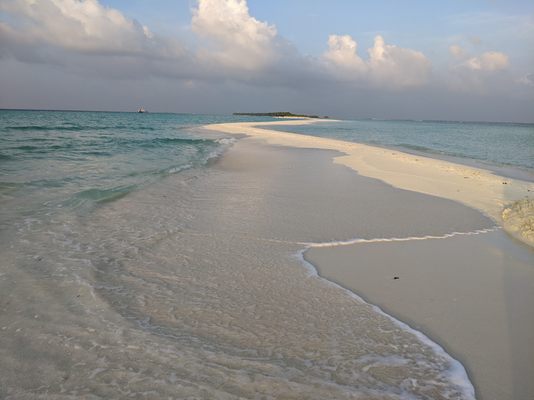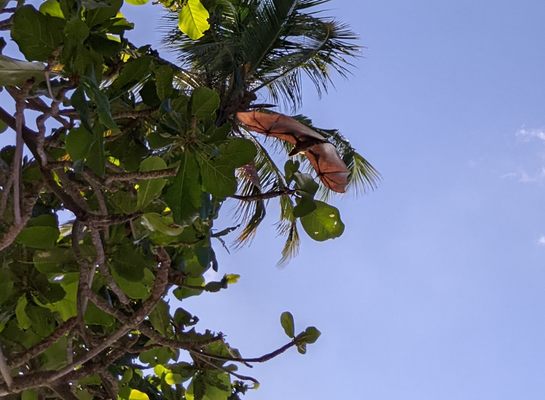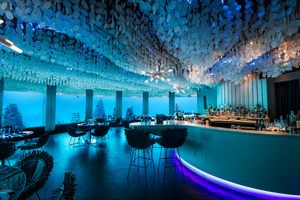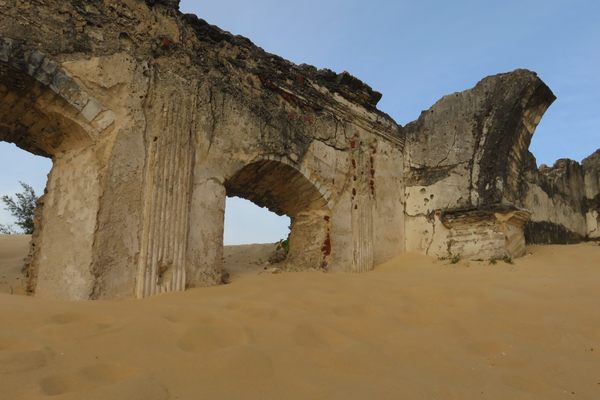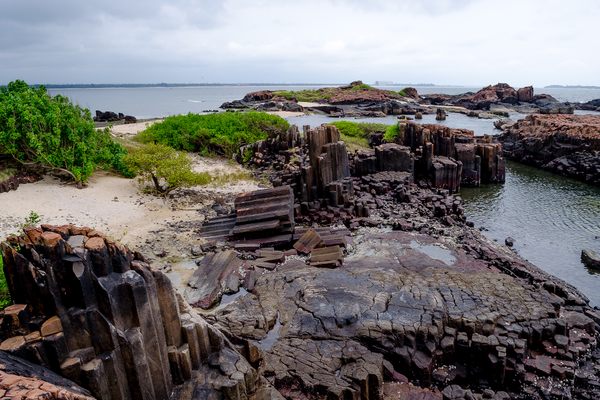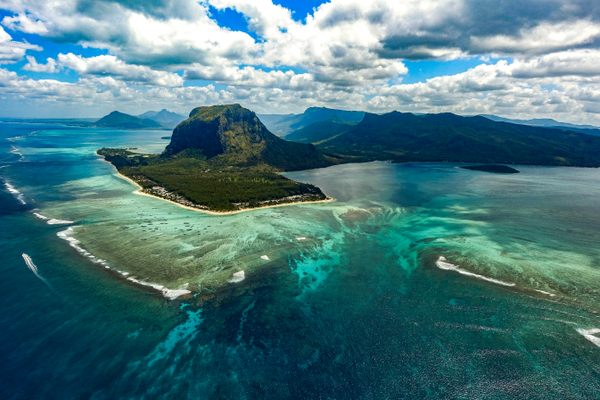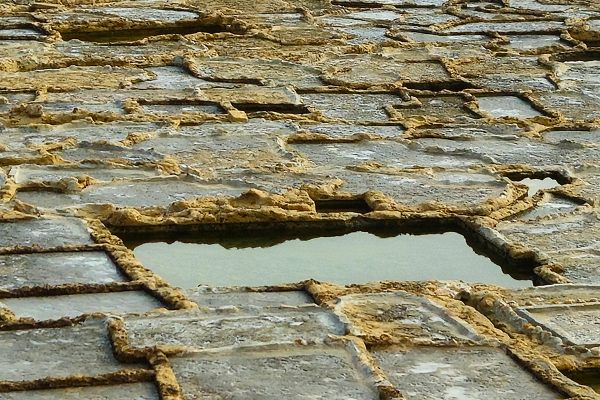About
Indian flying foxes—one of the largest bat species in the world—flit from one breadfruit tree to the next, their wings silent above the rhythm of the surf. Here on the island of Dhigurah, a narrow slice of sand and coral in the Maldives’ Alifu Dhaalu Atoll, about two hours by public speedboat from the capital of Malé, the ocean is always nearby.
At its widest point, Dhigurah is only 300 meters across, though most of it is much narrower. Its slender shape—Dhigurah means “long island” in Dhivehi—is most dramatic at its southwest end, a sand spit that stretches for hundreds of meters between the atoll lagoon and the open Indian Ocean.
Ocean and lagoon waves constantly compete to erode and rebuild the thin, serpentine sandbar, known as Dhigurashu Thun’di, or Long Beach. Yet the water on either side of the spit is surprisingly calm. It’s not unusual to see local children splashing in the waves while their parents set out a picnic nearby. About 600 people live on the island, and the spit is a popular destination for villagers at all times of day. A thin strip of tropical forest thick with palm and breadfruit trees offers shade from the midday sun. At sunset, sand and sky turn dramatic shades of red and orange as the lights of small fishing boats wink on in the gathering darkness.
Just beyond the spit, waves crash together, hinting at the powerful forces in motion beneath the surface. Even then, at low tides on calm days, it’s theoretically possible to cross from the sand spit to another sandbar that leads to a small island, home to a luxury resort—though a no-trespassing sign warns you against doing so.
The Maldives began welcoming tourists in 1972, and for most of that period, visiting meant flying into the capital of Malé and being whisked by chartered seaplane or private speedboat to a high-end resort island that was off-limits to locals. Since 2009, however, several “local islands,” dotted with guesthouses and small hotels, have opened to foreign tourists. On these islands, including Dhigurah, alcohol is banned and adhan, the Islamic call to prayer, echoes across the sand several times a day.
Dhigurah is located close to several nearshore sites popular with whale sharks and manta rays year-round, drawing a growing number of foreigners eager to snorkel or dive with the animals. But Dhigurashu Thun’di remains a quiet, calm place of stunning beauty shared by locals and visitors alike, a slim line of white sand curving between a turquoise lagoon and the open ocean.
Related Tags
Know Before You Go
Dhigurashu Thun'di is accessible by foot from the island's village in about half an hour. Walking along the northwest-facing beach requires some wading. Reaching it via the southeast beach is not recommended due to the rocky coast and stronger currents. You can also reach the spit by following the island's "Beach Trail," actually an unpaved road through the jungle. The road is used by villagers to access community gardens and the island's garbage collection site, so expect to yield to motorbikes and "Cool Rides," a popular local vehicle that's half motorized tricycle, half mini-pickup.
Unlike at the so-called "Bikini Beach" for tourists on the island's north side, modest attire is appropriate for Dhigurashu Thun'di, which is very popular with local families. Everyone visiting the Long Beach should be covered from shoulders and upper arms to knees.
Community Contributors
Added By
Published
January 26, 2022
